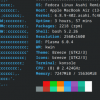Linux, outside the (x86) box
It's obvious -- Linux™ has become an attractive option for non-x86 platforms. Why? In this article, the author examines the reasons for this, including the fact that Linux on non-x86 enables affordable, easy-to-do virtualization; provides for better reliability, power consumption, and extended memory support; covers the lower and upper ranges of machines, giving users options outside of the middle range; revitalizes older hardware; and drives innovation. In the early days, Linux ran on just a narrow range of systems, mostly processors compatible with the Intel® 80386 processor. But the drive to get the first shell prompt on a new piece of hardware motivates people to do crazy things, targeting a variety of processors that "everyone knows" are not viable Linux platforms, such as handheld computers, watches, game consoles, and a variety of workstations and servers.
Some people tend to dismiss non-x86 Linux as an idle amusement (it isn't; it's actually a lot of fun). Linux development for other-than-x86 hardware has led to improvements in the quality of the Linux kernel, even for x86 users. Today, the main Linux kernel has code for 22 architectures, although not all of them are equally well supported or mature.









































































